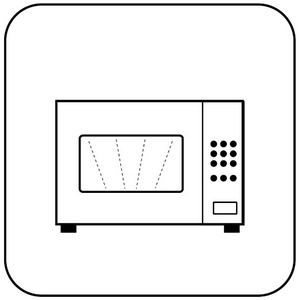Microwave compatibility
Porcelain in the microwave

This is a difficult topic for the consumer, because it concerns heating components, which one cannot see!
White porcelain - without decorations - should always be microwaveable. The composition of the raw materials from which porcelain is made must not exceed specified limits of lead, iron and cadmium. Nevertheless, the earthy raw materials kaolin and quartz always contain mainly iron. Although modern processing plants use powerful magnets to remove the iron-containing solids from the raw materials processed into powder, a residue can never be completely ruled out! Occasionally we encounter the phenomenon that white porcelain "pops" in the microwave. This is by no means a continuous error of a series or a product group, but rather rare individual pieces that are not compatible with the magnetic heating method.
With thousands of parts from one and the same production, it can happen that a single part shows this reaction. But we think: White porcelain should always be put in the microwave!
In the case of decorative porcelain, the raw material of the colors determines the suitability of the porcelain for microwave use. It should be remembered that high-quality decorations are fired at well over 1.000 °C. This is a temperature range at which normal colorants would burn without leaving any residue. In most cases, the colors for porcelain are obtained from metal oxides, e.g. copper oxide for red, cobalt for blue and chrome oxide for green. For decades, major suppliers of porcelain colors such as Preussag and Degussa AG have been working on the further development of metal oxides. It is thanks to them that porcelain can be refined today in almost all colors and variations. For several years now, sarin colors have also been used, i.e. biological, synthetic combinations with natural colorants. Only the manufacturer himself knows which components his decor is made of and he should explicitly indicate whether his dishes can be used in the microwave or not.
Our advice in case of doubt: Do not put decorative porcelain in the microwave!
By the way: If a piece of porcelain is not microwaveable, you can hear it for yourself when you put the unfilled part into the oven and let it run at the highest setting. If everything remains quiet, the porcelain is suitable. The heating of the empty porcelain must be minimal, hardly noticeable. If it bangs, the microwave breaks before the porcelain does.
More and more people enjoy the advantages of the microwave. They therefore increasingly need microwave-proof dishes. White porcelain from Holst is always suitable for use in microwaves without being damaged!
